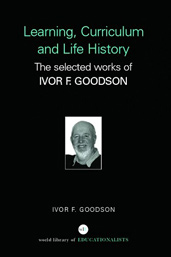Learning, Curriculum and Life Politics: the selected works of Ivor F. Goodson
Long Waves of Educational Reform
What our case studies of schools in the 1960s and 1970s show is a complex response to the economic conjuncture of this period. Some schools, such as Talisman and Sheldon, were sites of reform and innovation with new young cohorts of teachers or new buildings. But reform was within the existing grammar of schooling, stressing academic subjects, teacher initiation and hierarchical management. Alongside these schools were a cluster of sites – Durant, Lord Byron and Eastside – where a sustained attempt was made to reform the school. This was attempted in a ‘root and branch’ manner at Durant and Lord Byron, a full-tilt innovation at almost all levels from classroom to school management. Eastside embodied all of the demographic and youth culture changes, but with some continuing genuflection to established grammars of school.
The conjuncture of the 1960s and 1970s then, provide growth, innovation and change in all school sites, with some schools going further and attempting truly revolutionary changes in the patterns of schooling and the associated patterns of social and racial reproduction.
In some ways, this commentary provides the footnote to the conjuncture of the sixties and seventies: Herculean efforts to transform schools, break down walls, connect subjects to life, make learning active, and teaching facilitatory, ended with the economic downturn following the oil crisis of 1973. From this point on, social programs were less well funded; there were no longer so many new buildings or new initiatives. The huge influx of post-war baby boomers had worked their way through school and the school staff themselves began to ‘grey’ as contraction and consolidation set in. From the late seventies through to the early 90’s, we encounter a kind of interregnum of regression and decline in some schools. ‘The screw tightens’ (Durant); ‘fall from Grace’ (Sheldon); ‘insecurity and uncertainty’ (Talisman), alongside consolidation and improvement in others: ‘Camelot days’ (Barrett) and ‘Lighthouse School’ (Eastside). In all cases, however, a more traditional grammar of schooling reasserted itself, alongside a vigorous new pattern of stratification and standardization. This new conjuncture begins to emerge in the 1990s.
In Eric Hobsbawm’s phrase, the conjuncture of the 1960s and 1970s was a ‘golden age’ for social justice and social inclusion (Hobsbawm 1994). Caught in a cold war to prove they could offer more social and political opportunities than the competing communist bloc, Western countries followed policies of social welfare and inclusion. In 1989, with the collapse of the communist bloc, this suddenly changed. From now on the mantra of ‘free markets’ became the triumphalist slogan and public education was restructured with the procedures and principles of the new business orthodoxy as the engine of ‘change forces’. Hence, since 1989, curricula control passed to central and provincial governments with closely prescribed content and detailed targets and standards for performance, accountability and assessment procedures. These standardized reforms became a ‘world movement’, vigorously promoted by a range of agencies aligned to the globalizing free market.
